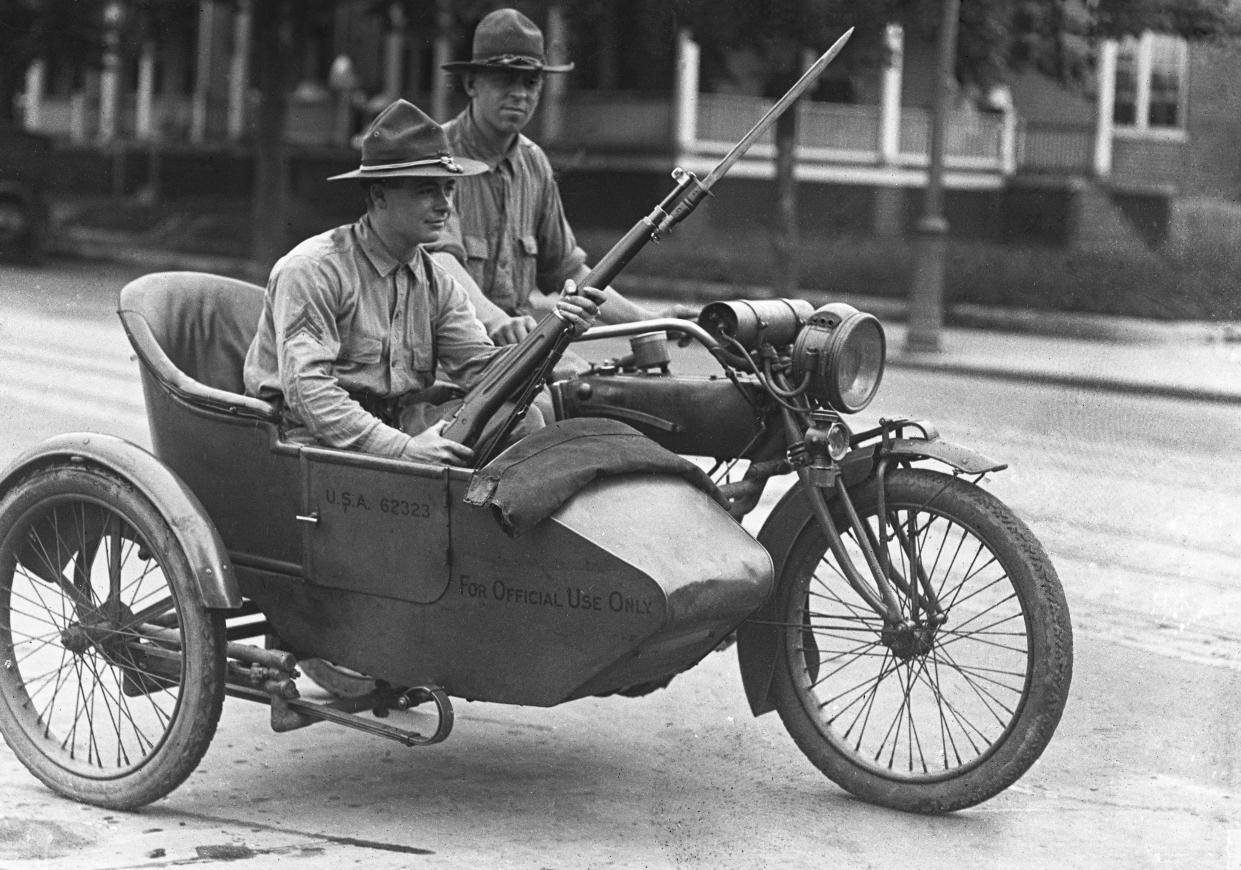Two years before the Tulsa massacre, the 'Red Summer' saw white mobs murder hundreds of Black Americans
One hundred years ago, on May 31, 1921, an angry white mob beat and murdered at least 300 Black residents in a Tulsa, Okla., neighborhood known as “Black Wall Street.” The incident became known as the Tulsa Race Massacre, one of the worst acts of racial violence in U.S. history.
But two years prior to the carnage in Tulsa, another violent wave of hate, which came to be known as the “Red Summer” of 1919, took hold in the country.
Just a year after the end of World War I, the U.S. was coming out of a third wave of the Spanish flu epidemic. Many white Americans had returned home from Europe to find more than 500,000 Black Americans had migrated from the South to northern cities and had taken many factory, warehouse and low-level government jobs.
Racial tensions flared as whites began to blame Black migrants for spreading the flu and began to seize on rumors, amplified by local newspapers, that Black men were assaulting white women.
During the summer of 1919, more than two dozen race riots broke out in at least 26 cities across the country, including Washington, D.C., Omaha, Neb., and Knoxville, Tenn., that NAACP leader James Weldon Johnson attributed to an "ever-present white fear of a loss of social status and dominance.”

The worst of the violence took place in Chicago, where 8 days of rioting was sparked on July 27, 1919, after a Black teen, Eugene Williams, floated his raft into a whites-only section of Lake Michigan. A white man threw rocks at the teen and he drowned, according to the Chicago Tribune, touching off several days of unrest after police refused to arrest the man eyewitnesses said caused the teen to drown. By the time the rioting ended on Aug. 3, two dozen Black people and 15 white people had been killed. Another 500 people were injured and more than a thousand Black residents were also left homeless after rioters burned down their homes.
The deadliest riot of that summer took place on Sept. 30 and Oct. 1 in and around Elaine, Ark. After a white police officer was killed in a shootout outside a gathering of Black sharecroppers, then-Gov. Charles Brough ordered 500 Army soldiers to retaliate. Nearly 200 people died as a result.
From April to November of 1919, about 30 riots broke out along the eastern part of the U.S. alone. Additional accounts of lynchings, church burnings and beatings were also reported as the Ku Klux Klan also saw a resurgence in membership.
Johnson, who coined the term “Red Summer” to describe the bloodshed and violence during that time, documented what he saw happening in D.C. at the time.
“I knew it to be true, but it was almost an impossibility for me to realize as a truth that men and women of my race were being mobbed, chased, dragged from street cars, beaten and killed within the shadow of the dome of the Capitol, at the very front door of the White House,” he wrote in the NAACP’s “Crisis” magazine.

The Red Summer also saw Black populations fight back against white mobs. Instead of pushing Black Americans into submission, the chaos of 1919 spurred them to bond together over a shared sense of identity and purpose, laying the groundwork for the civil rights movement three decades later.
As in Tulsa two years later, Black Americans rebuilt their communities and continued to thrive in spite of steep obstacles and vitriol. But systematic efforts of redlining, economic discrimination and the rise of the KKK all served to suppress Black progress.
For Dr. Gwinyai Muzorewa, chair of the political science, philosophy and religion department at Lincoln University in Pennsylvania, the disregard for Black life was as prevalent a hundred years ago as it is today.
“The continuous killings of Black people by white police tells us that the problem of race will be with us for a long time, until America turns ‘brown,’” Muzorewa told Yahoo News. “Racism is taught, not genetic. So parents teach their children to hate, despise and kill. On a positive note, because racism is taught, it can also be ‘untaught.’”
As with Tulsa, news coverage of the Red Summer of 1919 was highly slanted, if the violence directed against African Americans by whites was mentioned at all.

In 1996, on the 75th anniversary of the massacre, rioters burned down the church in which a memorial service was held earlier that day. Now the world knows about Tulsa, and according to Muzorewa, they ought to know about the Red Summer too.
“The Red Summer is not a forgotten issue,” Muzorewa said. “People in general tend to bury certain terrible experiences hoping never to see it again.”
(Cover thumbnail photo: Photo Illustration: Yahoo News; Photos: Universal History Archive/Universal Images Group via Getty Images, Chicago Sun-Times/Chicago Daily News collection/Chicago History Museum/Getty Images)
_____
Read more from Yahoo News:


